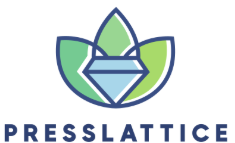Have you ever considered what amuse-bouche on your plate or that farm-to-table salad has to do with the looming challenges in our healthcare system? The data tells a different story, linking our dietary habits to an overburdened medical infrastructure.
\
The Issue at Hand: Across America – in clinics, hospitals & homes – doctors & caregivers grapple with diseases like diabetes, hypertension largely influenced by diet. While we focus on insurance coverage and hospital equipment shortages, we overlook what’s sitting right before us—the contents of our plates—playing a significant role in shaping public health outcomes.
\
My Position: We need not just reform but a reframe – viewing nutritional literacy from a stance of preventive medicine rather than palliative care. Our urgency should be oriented toward fostering healthy eating practices across socioeconomic lines as much as subsidizing pharmaceuticals.

\
Supporting Evidence: CDC reports demonstrate clear links between obesity rates and predisposition towards chronic disorders often taxing our healthcare facilities. A Harvard study elucidates how better nutrition could prevent at least $71 billion per year in medical costs, lost productivity, and the personal impacts of illness.
\
Counterarguments: Critics argue meals can’t replace medicines—that while better diets may help maintain good health for those without serious conditions, they offer little assistance for acute ailments requiring immediate treatment.
\
Real-World Examples:: Countries like Japan have significantly lower obesity rates and healthcare costs, attributed partially to their dietary habits—high in fresh seafood, vegetables with portion control.

\
Historical Precedents:: During the 1970s, Finland responded to a heart disease epidemic by promoting dietary shifts emphasizing fruits & vegetables. As the public embraced these changes, heart disease rates plummeted.
\
Personal Experience:: Back on a reporting assignment within farmer markets in San Francisco in the early 00’s, I observed how accessible quality produce evoked communities invested in healthier living.
\
Call to Action:: Support local farmers’ markets. Encourage schools to educate children about nutrition. Advocate for healthy alternatives at restaurants. We must make our voices heard if we want an impact on policy.
\
Vision for the Future:: A future where preventive health isn’t a luxury reserved for those who can afford organic groceries but democratized across socioeconomic tiers.
\
In conclusion, it’s crucial, now more than ever before that we renegotiate our relationship with food—not just as consumers but active participants within health-oriented societies.

